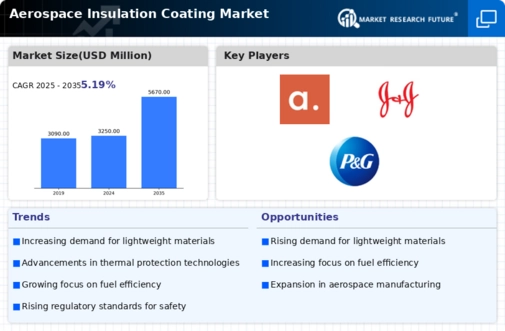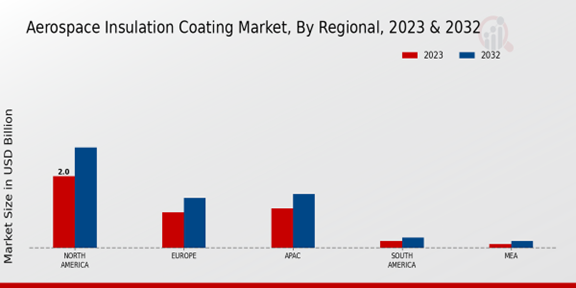Market Growth Projections
The Global Aerospace Insulation Coating Market Industry is projected to experience substantial growth over the next decade. With a market value expected to reach 3250 USD Million in 2024 and potentially 5670 USD Million by 2035, the industry is on a promising trajectory. The anticipated compound annual growth rate of 5.19% from 2025 to 2035 reflects the increasing demand for advanced insulation solutions in aerospace applications. This growth is driven by various factors, including technological advancements, regulatory compliance, and the rising production rates of aircraft. Such projections indicate a vibrant future for the aerospace insulation coating market.
Rising Aircraft Production Rates
The Global Aerospace Insulation Coating Market Industry is poised for growth due to the rising production rates of commercial and military aircraft. As global air travel continues to expand, manufacturers are ramping up production to meet the increasing demand. This surge in aircraft production necessitates the use of high-performance insulation coatings to ensure thermal protection and energy efficiency. The projected compound annual growth rate of 5.19% from 2025 to 2035 indicates a sustained demand for insulation solutions, as manufacturers seek to enhance the performance and longevity of their aircraft. This trend highlights the critical role of insulation coatings in supporting the aerospace industry's growth.
Increased Focus on Sustainability
Sustainability is becoming a central theme within the Global Aerospace Insulation Coating Market Industry, as manufacturers strive to minimize their environmental impact. The aerospace sector is increasingly adopting eco-friendly insulation coatings that reduce carbon footprints and comply with environmental regulations. This shift towards sustainable practices is not only driven by regulatory pressures but also by consumer demand for greener technologies. As a result, companies are investing in research and development to create innovative insulation solutions that align with sustainability goals. This focus on eco-friendly products is likely to shape the future of the aerospace insulation coating market, fostering growth and innovation.
Growing Demand for Lightweight Materials
The Global Aerospace Insulation Coating Market Industry is experiencing a surge in demand for lightweight materials, driven by the aerospace sector's focus on enhancing fuel efficiency and reducing emissions. As aircraft manufacturers increasingly prioritize weight reduction, insulation coatings that provide thermal protection without adding significant weight are becoming essential. This trend is reflected in the projected market value, which is expected to reach 3250 USD Million in 2024. Lightweight insulation solutions not only improve aircraft performance but also contribute to sustainability goals, making them a critical component in modern aerospace design.
Regulatory Compliance and Safety Standards
The Global Aerospace Insulation Coating Market Industry is significantly influenced by stringent regulatory compliance and safety standards imposed by aviation authorities. As safety remains a paramount concern in aerospace operations, manufacturers are compelled to adopt insulation coatings that meet or exceed these regulations. This compliance not only ensures the safety of aircraft but also enhances operational efficiency. The increasing emphasis on safety standards is likely to drive market growth, as companies invest in high-quality insulation solutions that adhere to these regulations. This trend underscores the importance of reliable insulation coatings in maintaining safety and performance in the aerospace sector.
Technological Advancements in Coating Solutions
Technological innovations in insulation coating formulations are propelling the Global Aerospace Insulation Coating Market Industry forward. Advanced materials, such as nanotechnology-based coatings, offer superior thermal resistance and durability, which are crucial for aerospace applications. These innovations enable manufacturers to meet stringent regulatory standards while enhancing the overall performance of aircraft. The ongoing research and development efforts in this domain suggest a robust growth trajectory, with the market anticipated to expand significantly, potentially reaching 5670 USD Million by 2035. Such advancements not only improve product efficacy but also align with the aerospace industry's evolving needs.














